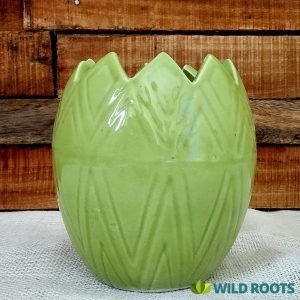No products in the cart.
All Plants, Fruit Plants, Outdoor Plants
Banana – G9, Kela – Plant
Availability:
680 in stock
₹175.00 ₹260.00
680 in stock
**THIS PLANT COMES WITH BASIC BLACK POT**
About Banana
This product does not have the flowers and fruits at the time of shipping. After, 9-10 months, the plant will bloom and have beautiful fruits. Banana is the fruit of a plant of the genus Musa and Musaceae family, which is cultivated primarily for food and secondarily for the production of fiber used in the textile industry are also cultivated for ornamental purposes. Moreover the banana is an edible fruit, botanically a berry and produced by several kinds of large herbaceous flowering plants and almost all the modern edible bananas come from the two wild species – Musa acuminata, Musa balbisiana .
Bananas are vigorously growing, herbaceous plants . Besides this banana is not a tree but a high herb that can attain up to 4 meters of height. The cultivars vary greatly in plant fruit size, plant morphology and fruit quality. Most bananas have a sweet flavor when ripe. In some countries, bananas used for cooking may be called plantains, in contrast to dessert bananas. In addition , that fruit is variable in size, color and firmness.
The banana is a perennial plant that replaces itself and they do not grow from a seed but from a bulb or rhizome.
Besides the time between planting a banana plant and the harvest of the banana bunch is from 9 to 12 months. Moreover the flower appears in the sixth or seventh month.
Plant Specifications
| Common Name | Japanese banana, Kela |
| Maximum Reachable Height | 2-4 meter |
| Flower Colour | Green, yellow, red, purple or brown when ripe |
| Bloom Time | Seasonal bloomer |
| Difficulty Level | Easy |
Planting And Care
Refer our Garden Guide for detailed procedures and meanings of words related to gardening.
Sunlight
- Morning sunlight of more than 6 hours a day is ideal for flower and fruit development.
Soil
- The soil should be well drained, fertile and rich in organic content for growing Banana plant.
Watering
- Poke your finger/plain small stick into the soil to check the moisture.
- Apply 4 cup (approx.200ml) of water when the top soil (1-2 inch) in the pot feels dry to touch.
- Do not overwater the plant.
- Water the plants thoroughly in summer and reduce watering in winter and rainy season.
- Moreover water should be applied preferably in the morning or evening.
Application of Fertilizer
- Before application of fertilizer loosen the topsoil without disturbing the roots of the plant so it can uptake the nutrients and moisture easily.
- Apply organic fertilizer once a month.
- Besides apply water immediately after application of fertilizer.
Plant Protection
- Remove dead, infected or damaged plant parts and discard them away from the plants.
- For any insect attack or disease, you can use Neem oil, Eucalyptus oil or Citrus oil spray for primary treatment.
Don’ts
- Do not overwater the plant.
- In addition avoid applying water on leaves during initial days as it may cause fungal infection.
Banana Care
Initial care for 1-2 weeks after receiving plant at your location:
- Poke your finger/plain small stick into the soil to check the moisture.
- Apply 4 cup (approx.200ml) of water when the top soil (1-2 inch) in the pot feels dry to touch.
- Keep the plant in indirect bright light.
- Do not re-pot for min. 2 weeks after receiving it.
Key requirements to keep plant healthy:
| Sunlight | Natural bright light with morning sunlight(more than 6 hours) |
| Watering | Apply 4 cup(approx.200ml) of water when the top soil (1-2 inch) in the pot feels dry to touch |
| Soil | Well-drained, fertile and nutrient rich soil. |
| Temperature | 20-27 Degree Celsius. |
| Fertilizer | Apply organic fertilizer once a month |
| Harvest Season | Approximately 90 days from blooming period. |
Banana Special Feature
They are classic tropical foliage plants with beautiful inflorescence and edible fruits
Banana Uses
Ornamental Use:
- It add beauty to your garden, pot plants, bedding plants, many landscaping uses
Medicinal Use:
- All parts of the banana have medicinal value.
- Plant sap can be taken internally or applied externally to stings and bites
- The young leaves can be used as a poultice for skin irritations
- Note: The following information is general guidelines, be sure to ask your healthcare provider for guidelines
Culinary Use:
- Banana cultivated primarily for food and secondarily for the production of fibre used in the textile industry
- Bananas are tropical fruits that are easily obtainable in most parts of the world, packed with flavor and loaded with nutritional value.
Disclaimer : The image is for reference purposes only. The actual product may vary in shape or appearance based on climate, age, height, etc. click here .
Based on 0 reviews
Be the first to review “Banana – G9, Kela – Plant”
You must be logged in to post a review.









There are no reviews yet.